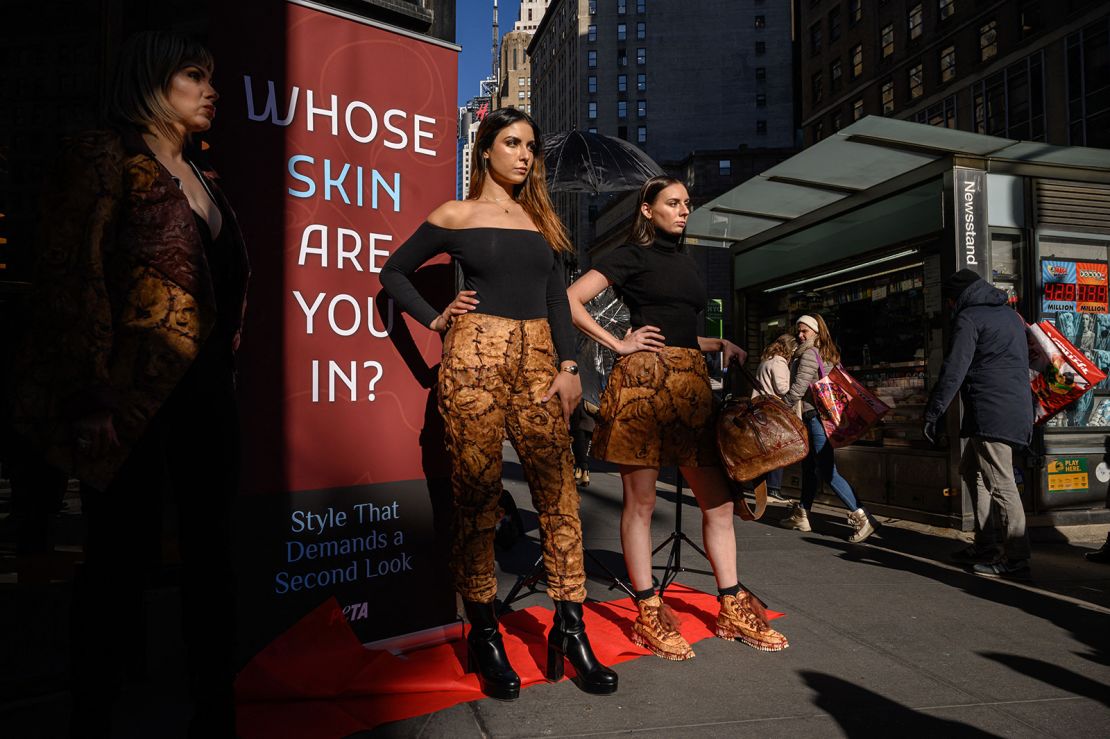The allure of leather has captivated fashion enthusiasts for centuries, weaving an intricate tapestry of style, luxury, and durability. Yet, beneath its polished exterior lies a deeply contentious issue — is leather merely a byproduct of the textile industry, or does it constitute an act of animal cruelty? This question permeates debates surrounding ethical fashion, highlighting the dichotomy between aesthetic appeal and moral responsibility.
To fully grasp the ethical quandary surrounding leather, one must first embark on an exploration of its origins. Leather is derived from the skin of animals — predominantly cattle, goats, sheep, and pigs. The journey from live animal to luxurious product is fraught with challenges and ethical concerns. Imagine the process as a double-edged sword. One side gleams enticingly, promoting an image of chic sophistication; the other, however, is stained with blood and suffering, often hidden behind the glossy façade of high-end marketing.
The leather industry burgeons with complexity. It is not merely a byproduct of meat production; rather, it operates as a significant enterprise in its own right. In many instances, the demand for leather propels the breeding and slaughter of animals specifically for their hides. This mercenary relationship challenges the notion of leather as a benign byproduct. The animals, in countless instances, endure overcrowded living conditions, inadequate veterinary care, and inhumane treatment before their inevitable fate. Such realities sharpen the focus on the questions of ethical consumerism and responsibility.
Ethical considerations also extend to the environmental ramifications of leather production. The tanning process, essential for preserving and softening the hide, often employs toxic chemicals, which can leach into waterways, harming ecosystems and local communities. Herein lies another facet of the ethical dilemma: as consumers, should we prioritize our desires for luxury and style over the health of our planet and non-human inhabitants? The paradox sharpens; one person’s chic accessory can simultaneously represent environmental degradation and the suffering of sentient beings.
In the realm of fashion, the metaphor of leather surfaces as a beautifully crafted mask. On one side, it conveys the image of sophistication, elegance, and timelessness. Yet, when flipped, it reveals the haunting reality of slaughterhouses, where bright eyes once filled with life are extinguished so their skins can be donned as high fashion. The juxtaposition of beauty and brutality embodies the very essence of the leather debate. This mask, though alluring, often conceals a myriad of ethical shortcomings, prompting a reevaluation of what it truly means to wear leather.
The rise of animal welfare advocacy groups has spurred an increasing awareness of these ethical dilemmas. Organizations dedicated to combatting animal cruelty have worked tirelessly to illuminate the hidden realities of the leather industry. Movements like these serve as a clarion call, encouraging conscious consumerism and prompting individuals to reassess their values regarding fashion choices. The motto “love animals, wear vegan” has gained traction, encouraging designers and consumers alike to explore alternatives that eschew animal exploitation.
Innovative materials such as cork, pineapple leather (known as Piñatex), and mushroom leather are emerging as viable alternatives, challenging the long-held supremacy of animal-derived leather. These innovative substitutes not only alleviate the burden on animals but also present exciting opportunities for creativity within fashion design. The uniqueness of these materials lies not only in their sustainable attributes but also in their ability to forge a deeper connection to nature, transforming the narrative surrounding luxury goods. The metaphorical mask of fashion is evolving, shifting from one that conceals suffering to one that champions compassion.
Despite these advances, the transition from conventional leather to alternatives is not without its challenges. Natural fibers and synthetic materials must be rigorously assessed for their environmental impact, energy consumption, and overall sustainability. The landscape of ethical fashion is fraught with complexity, as the journey toward true sustainability is neither linear nor straightforward. Still, the commitment to seek alternatives to traditional leather reflects a growing consciousness about the interconnectedness of all beings on this planet.
As the conversation surrounding fashion and animal cruelty continues to unfold, it highlights a pivotal cultural shift toward prioritizing ethics over aesthetics. Consumers increasingly seek transparency from brands, demanding to know the provenance of materials and the conditions under which they are produced. This growing awareness serves as a powerful catalyst for change, compelling the fashion industry to reassess its practices and embrace more humane methods of production.
In conclusion, the question of whether leather is considered animal cruelty delves deep into the heart of ethical fashion. It is imperative to recognize that the decision to wear leather extends beyond personal style; it carries weighty implications for animals, the environment, and society as a whole. As the fashion world evolves, the opportunity to redefine luxury presents itself. We stand at a crossroads, where the mask of leather can either continue to hide the brutality of its origins or transform into a symbol of compassion and innovation. The future of fashion has the potential to be a canvas where beauty serves a greater purpose, one that embodies empathy and respect for all living beings.








